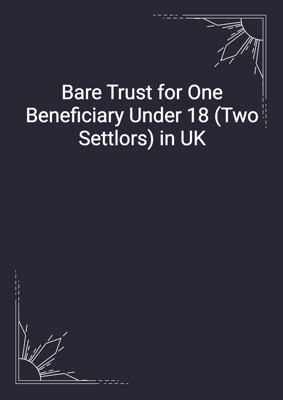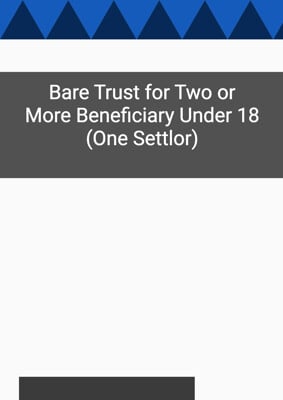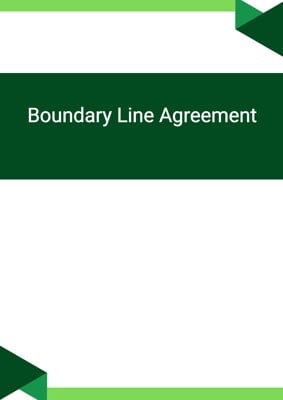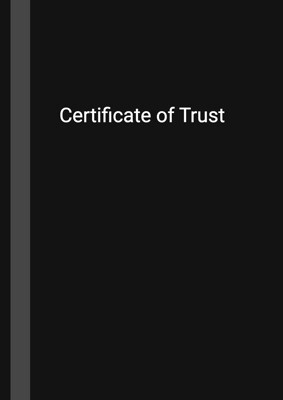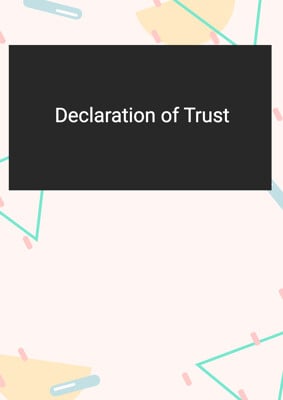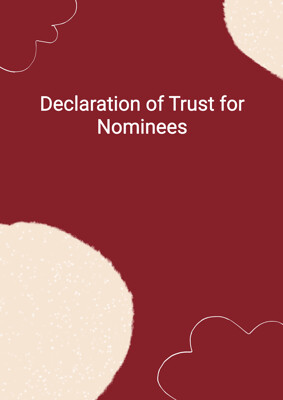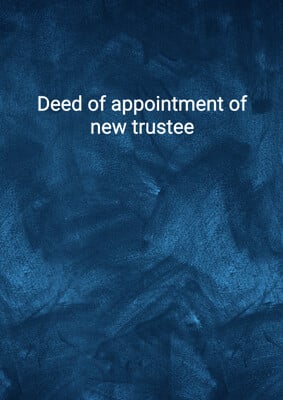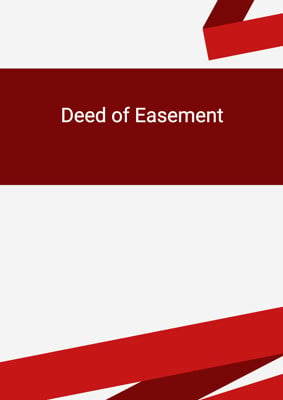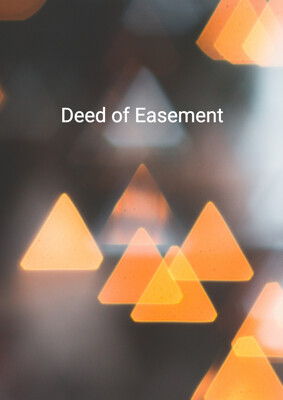
Bare Trust for One Beneficiary Under 18 (One Settlor)
Property
This is a declaration made by an individual that they will hold and manage a property on the behalf of the beneficiary under a trust. This declaration includes the restrictions on the trustee and the applications that must be submitted to the Registry.
How to Tailor the Document for Your Need?
01
Create Document
Fill in the details of the parties. You can click the "Fill with Member’s Information" button to complete it with information saved to your account.
02
Fill Information
Please fill in any additional information by following the step-by-step guide on the left hand side of the preview document and click the "Next" button.
03
Get Document
When you are done, click the "Get Document" button and you can download the document in Word or PDF format.
04
Review Document
The document should be signed by the authorised signatory (or directors of a company) and witnessed to complete the formality.
Document Preview
Document Description
This document is a Bare Trust Deed, which is a formal legal arrangement where one party, known as the Settlor, transfers assets to a Trustee who holds the assets on behalf of a Beneficiary. The Trustee has a fiduciary duty to manage the assets in the Trust Fund for the Beneficiary’s benefit, typically until the Beneficiary reaches a specified age, often 18.
It is used when the Settlor wishes to create a trust for the benefit of a specific individual (the Beneficiary) and outlines the terms and conditions under which the Trustee is to hold, manage, and distribute the assets. The document also sets out provisions for managing the trust, such as investment powers, the ability to make distributions, and the powers and responsibilities of the Trustee. It is commonly used in estate planning or to manage assets on behalf of minors or those who may not be able to manage the assets themselves.
This Deed is signed and executed as a formal document under the governing law and jurisdiction specified in the deed, ensuring legal enforceability.
How to use this document?
To use the Declaration of Trust document effectively, follow these steps:
1. Understand the purpose: Familiarize yourself with the purpose of the document, which is to establish a bare trust of a property. This trust relationship involves the trustee holding the property on behalf of the beneficiary.
2. Identify the parties: Clearly identify the parties involved in the trust by entering their names and principal places of business in the agreement. This ensures that both parties are clearly identified and their roles are established.
3. Define the property: Specify the freehold property that is subject to the trust. Provide a clear description of the property to avoid any confusion.
4. Declare the trust: Use the provided language to irrevocably declare the trust. This establishes the legal basis for the trust relationship and the trustee's obligation to hold the property on behalf of the beneficiary.
5. Impose restrictions: Ensure that the trustee is aware of the restrictions on their dealings with the property. They should not sell, assign, transfer, or dispose of any part of the property without the prior written consent of the beneficiary. Additionally, they should not create any encumbrances or grant interests in the property to third parties, except for the beneficiary.
6. Register the trust: Follow the necessary steps to register the trust with the HM Registry. This involves submitting applications to place restrictions on the title of the property. Once the registration is completed, the trustee must send the official copies of the title to the beneficiary within one month.
7. Execute the deed: Ensure that the document is executed as a deed, following the required legal formalities. This includes signing and dating the document.
By following these steps, you can effectively use the Declaration of Trust document to establish a bare trust of a property and protect the interests of both the trustee and the beneficiary.
Not the right document?
Don’t worry, we have thousands of documents for you to choose from:
